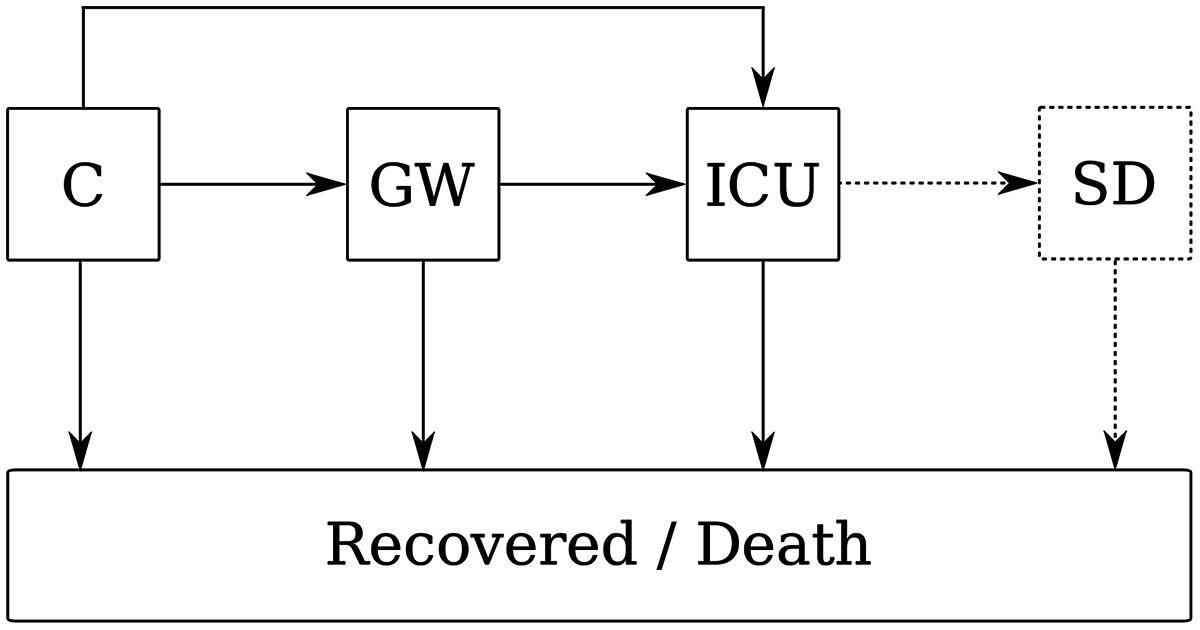Navigating hospitals safely through the COVID-19 epidemic tide: Predicting case load for adjusting bed capacity
- PMID: 32928337
- PMCID: PMC8160497
- DOI: 10.1017/ice.2020.464
Navigating hospitals safely through the COVID-19 epidemic tide: Predicting case load for adjusting bed capacity
Abstract
Background: The pressures exerted by the coronavirus disease 2019 (COVID-19) pandemic pose an unprecedented demand on healthcare services. Hospitals become rapidly overwhelmed when patients requiring life-saving support outpace available capacities.
Objective: We describe methods used by a university hospital to forecast case loads and time to peak incidence.
Methods: We developed a set of models to forecast incidence among the hospital catchment population and to describe the COVID-19 patient hospital-care pathway. The first forecast utilized data from antecedent allopatric epidemics and parameterized the care-pathway model according to expert opinion (ie, the static model). Once sufficient local data were available, trends for the time-dependent effective reproduction number were fitted, and the care pathway was reparameterized using hazards for real patient admission, referrals, and discharge (ie, the dynamic model).
Results: The static model, deployed before the epidemic, exaggerated the bed occupancy for general wards (116 forecasted vs 66 observed), ICUs (47 forecasted vs 34 observed), and predicted the peak too late: general ward forecast April 9 and observed April 8 and ICU forecast April 19 and observed April 8. After April 5, the dynamic model could be run daily, and its precision improved with increasing availability of empirical local data.
Conclusions: The models provided data-based guidance for the preparation and allocation of critical resources of a university hospital well in advance of the epidemic surge, despite overestimating the service demand. Overestimates should resolve when the population contact pattern before and during restrictions can be taken into account, but for now they may provide an acceptable safety margin for preparing during times of uncertainty.
Figures




References
-
- Li R, Rivers C, Tan Q, Murray MB, Toner E, Lipsitch M. The demand for inpatient and ICU beds for COVID-19 in the US: lessons from Chinese cities. medRxiv 2020. March 16. doi: 10.1101/2020.03.09.20033241. - DOI
-
- Critical preparedness, readiness and response actions for COVID-19. World Health Organization website. https://apps.who.int/iris/bitstream/handle/10665/331494/WHO-2019-nCoV-Co.... Published March 19, 2020. Accessed May 26, 2020.
-
- Grasselli G, Pesenti A, Cecconi M. Critical care utilization for the COVID-19 outbreak in Lombardy, Italy: early experience and forecast during an emergency response. JAMA 2020;323:1545–1546. - PubMed
MeSH terms
LinkOut - more resources
Full Text Sources
Medical
Miscellaneous

